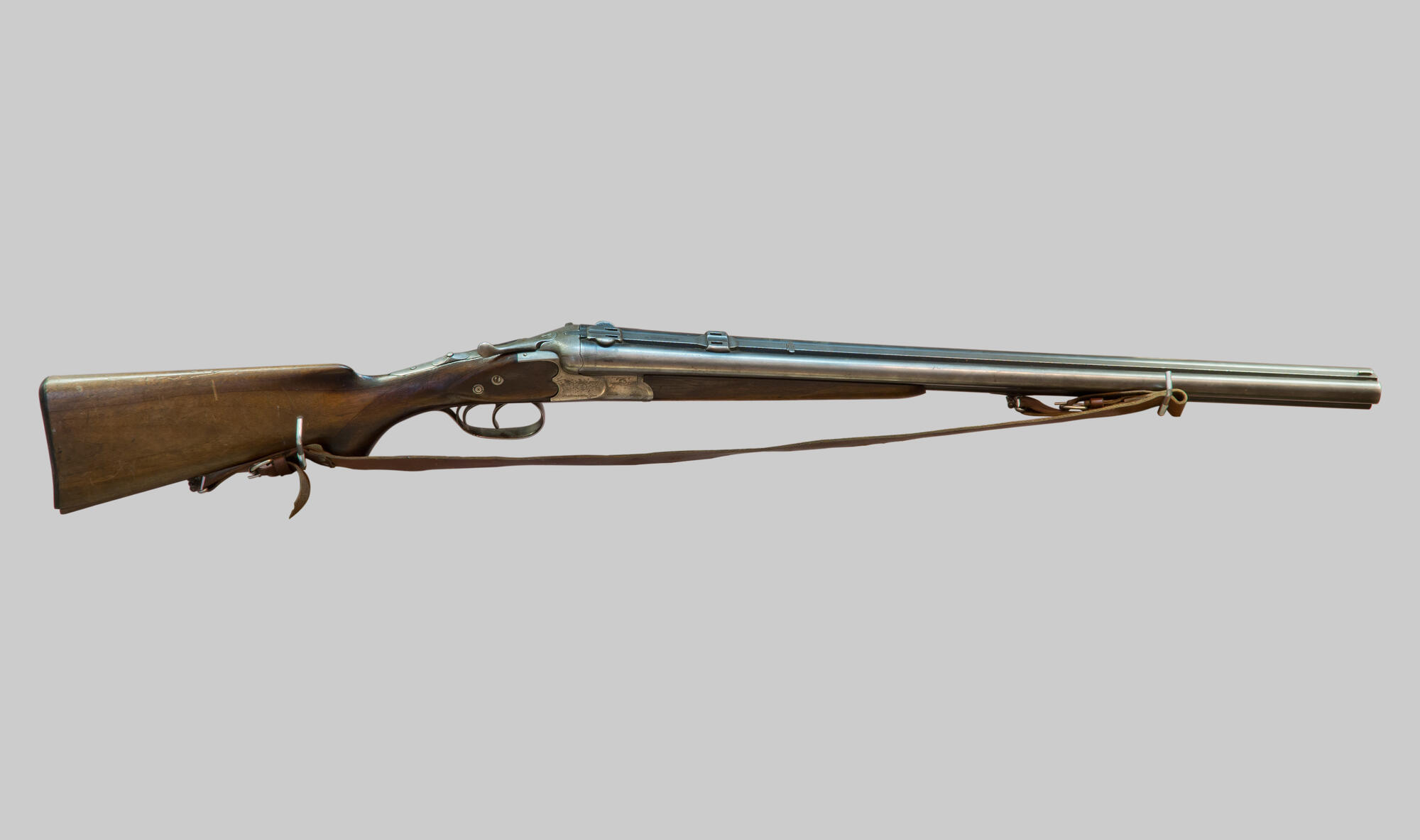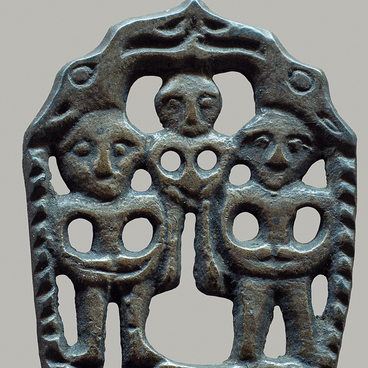Sauer is one of the oldest fire-arms firms in Germany, dating back to the middle of the 18th century. Despite the high price, the company’s export guns have always been sorted out by hunting enthusiasts very quickly. The gun in the museum’s exposition belonged to Alexander KuznetsOv - a hunter, local historian, a master of making stuffed birds and animals.
The production of Sauer triple-barreled intra-hammer shotguns began in the late 19th - early 20th centuries. Their key properties were efficiency and reliability: the triple breechblock and shotgun barrels were cast from high-quality Krupp steel.
The upper two barrels have a caliber of 16 mm, they were designed for hunting large game. The lower barrel has a caliber of 36 mm, and was used for finishing or small game.
The pusher of the trigger of the internal strikers is located on the neck of the box. There is a safety device against accidental release on the left side of the gun box. Sights of a gun consist of a front sight on the muzzle, an aiming bar, a sector sight at the breech of the barrels. The recesses on the aiming bar of the gun serve as sockets for mounting a telescopic sight.
The engraved barrel of the gun and the recoil pad - an elastic plate to soften the recoil - have branded marks, including two intertwined ‘S’. To facilitate portability, the shotgun is equipped with an embossed leather strap.
In the north of the Perm Territory, hunting took a significant place in the economic activities of the inhabitants. Individual dates and complexes of calendar rituals were associated with commercial hunting. Holidays and ceremonies were dates - dates for the beginning and end of the hunting industry. As a rule, there were two hunting seasons - autumn, which began in late autumn before Christmas, and spring starting with Maslenitsa festival.
As for autumns, they took their dogs to hunt for hazel grouse, where used goose or swan feathers for baiting. Then they went to hunt wood grouses and grouses, finally, if there was a good harvest of pine nuts in the forests, it was possible to hunt a squirrel.
After the October holiday of the Intercession, they shot the ‘dear beast’ - martens and ermines. The hunt for fur animals was very lively. Hunters went out into the deep taiga and lived there in whole artels, getting valuable skins. The carcasses of upland, that is, birds, game and the skins of a fur-bearing animal cost 20-60 kopecks from the buyers of UsOlye at the end of the 19th century. In the 19th century there were no bans and standards for hunting animals.
The production of Sauer triple-barreled intra-hammer shotguns began in the late 19th - early 20th centuries. Their key properties were efficiency and reliability: the triple breechblock and shotgun barrels were cast from high-quality Krupp steel.
The upper two barrels have a caliber of 16 mm, they were designed for hunting large game. The lower barrel has a caliber of 36 mm, and was used for finishing or small game.
The pusher of the trigger of the internal strikers is located on the neck of the box. There is a safety device against accidental release on the left side of the gun box. Sights of a gun consist of a front sight on the muzzle, an aiming bar, a sector sight at the breech of the barrels. The recesses on the aiming bar of the gun serve as sockets for mounting a telescopic sight.
The engraved barrel of the gun and the recoil pad - an elastic plate to soften the recoil - have branded marks, including two intertwined ‘S’. To facilitate portability, the shotgun is equipped with an embossed leather strap.
In the north of the Perm Territory, hunting took a significant place in the economic activities of the inhabitants. Individual dates and complexes of calendar rituals were associated with commercial hunting. Holidays and ceremonies were dates - dates for the beginning and end of the hunting industry. As a rule, there were two hunting seasons - autumn, which began in late autumn before Christmas, and spring starting with Maslenitsa festival.
As for autumns, they took their dogs to hunt for hazel grouse, where used goose or swan feathers for baiting. Then they went to hunt wood grouses and grouses, finally, if there was a good harvest of pine nuts in the forests, it was possible to hunt a squirrel.
After the October holiday of the Intercession, they shot the ‘dear beast’ - martens and ermines. The hunt for fur animals was very lively. Hunters went out into the deep taiga and lived there in whole artels, getting valuable skins. The carcasses of upland, that is, birds, game and the skins of a fur-bearing animal cost 20-60 kopecks from the buyers of UsOlye at the end of the 19th century. In the 19th century there were no bans and standards for hunting animals.



